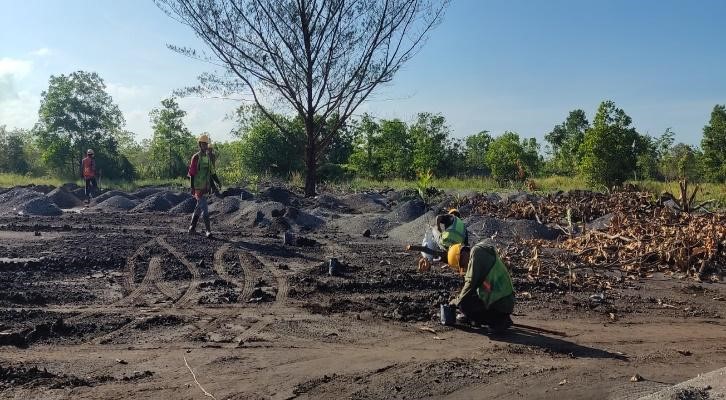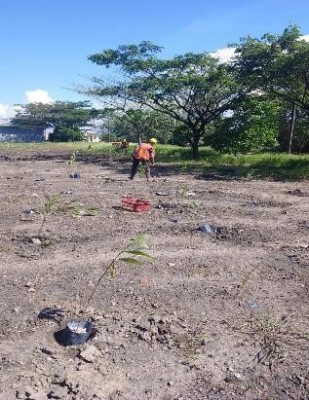This post is also available in: Indonesian
PLANTING OF ACACIA MANGIUM AS A MAIN SUPPORTING RAW MATERIAL FOR BOILER COMBUSTION TO REDUCE CONVENTIONAL GAS EMISSIONS
Acacia mangium or better known as acacia mangium is a type of fast-growing tree originating from Australia and Southeast Asia. Planting Acacia mangium in the Steam Power Plant (PLTU) area has a number of advantages that can support soil conditions and the PLTU production process. Apart from reforestation purposes, planting Acacia in the PLTU Bangka area is also intended as an energy forest tree and is an ideal choice due to its advantages.
The acacia plant has the advantage of being able to improve the construction of loose soil to become dense so that it can rehabilitate the land area around the PLTU that needs to be restored. The harvest cycle for acacia trees is also relatively fast, estimated at 1-2 years, and each year the following year. By planting in large quantities and the ability to grow quickly, Acacia can help reduce pollution in production areas that have high pollution due to the transportation of FABA and coal. Apart from that, Acacia stems can be used as woodchips, a raw material to replace coal in the co-firing process. The co-firing process in generation activities is able to reduce the emissions produced, especially conventional emissions. Biomass co-firing is an alternative to encourage the achievement of the renewable energy mix target of 23 percent by 2025. This means that co-firing biomass is a solution in decarbonization efforts at Steam Power Plants (PLTU).
 |
 |
|---|



